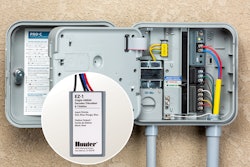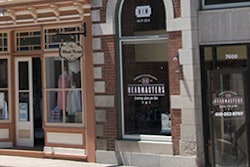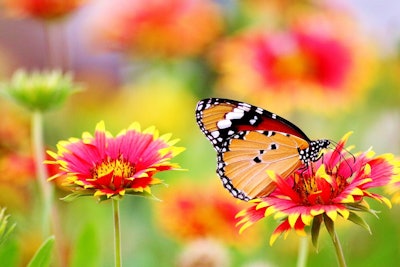 Photo: Pexels
Photo: PexelsTo give customers a little something extra to enjoy about their outdoor space, consider creating a butterfly garden.
Butterfly gardens are a popular addition to a landscape for many reasons. Along with creating a space that welcomes butterflies and other pollinators to stop and stay awhile, they also add a beautiful focal point to your customer’s lawn.
Before starting on this type of project, be sure to research which types of butterflies are common in your area, as this will help you rule out certain types of plants and flowers when selecting what should and shouldn’t be in the garden.
Check out a few tips you can keep in mind as you start the planning process of a butterfly garden.
Choosing plants
While it’s true that many different flower and plant varieties will attract butterflies, that doesn’t mean that just any plant can be added to a butterfly garden. It is important to choose plants that will serve numerous needs, such as acting as a food source and also giving them a safe place to lay eggs.
When picking out plants, you’ll need to include nectar plants that will cater to adult butterflies and plants that will be able to provide sustenance to caterpillars as well. By incorporating plants that fit these two categories, your customer’s space will be better suited to accommodate butterflies in all stages of life.
Having a healthy presence of milkweed in the space can be one of the biggest attractants for pollinators, especially monarch butterflies. Some experts say that monarchs will only lay their eggs on milkweed, therefore it is necessary to have it present in the garden if attracting this particular butterfly is the goal.
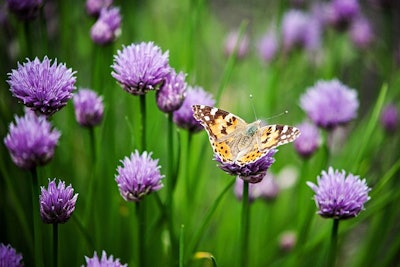 Photo: Pixabay
Photo: PixabayThere are numerous plants out there that could be deemed acceptable for a butterfly garden due to their bright colors and fragrance, but many of these options won’t provide much for caterpillars.
One particular plant you need to avoid, even though the name sounds ideal for this type of garden, is the butterfly bush (Buddleja davidii). With a name like butterfly bush, it’s hard to believe that you shouldn’t add it into the space, but this plant is, in fact, an invasive species native to Asia.
Butterfly bushes will provide butterflies with nectar, but caterpillars will not feed on their leaves, which means that it won’t be a good place to lay eggs.
Red Butterflies Milkweed (Asclepias curassavica ‘Red Butterflies’) is a great perennial option that comes in a mixture of bright yellow and red, which are two colors that attract butterflies the most. This cultivar of milkweed will only require occasional watering after it’s established, and it is fast growing.
Black-Eyed Susans (Rudbeckia hirta) are also great perennial options that add a bright pop of yellow to the space. These flowers have a long bloom season, and they are capable of reseeding themselves after the first season.
Diversity and appeal
To ensure your customer’s space is the most inviting it can be, don’t shy away from planting a wide variety of nectar and host plants, as this will ensure you’re able to attract more butterfly species.
Bright colors might get them into the space, but having areas that provide shelter, water, sun and a wide variety of plants to choose from will keep them around long term.
Having shrubs and trees around the garden can sometimes create an excess of shade, but they also can help cut down on the wind, which is very beneficial for a butterfly garden. When placed properly, these taller additions can make it easier for butterflies to stick around and explore the area without fear of being blown away.
Shrubs and trees also provide shelter for butterflies when it comes time to roost at night, and some types can serve as a food source for caterpillars.
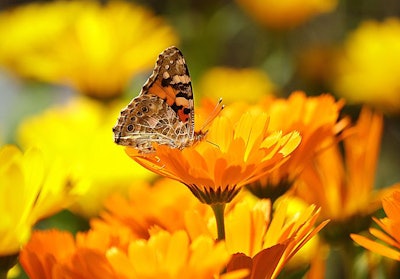 Photo: Pixabay
Photo: PixabayAlong with giving butterflies a lot to choose from, having different plant varieties in the space will also create an eye-catching focal point in your customer’s yard.
To make the space look more unique, choose plants that will grow at varying heights, ones with different shapes and colors, and ones that have a staggered bloom time to ensure there are many different elements of texture and depth in the space.
Grouping multiple plants together will also help unify the look and cut down on the distance butterflies have to fly to get the nectar they desire. If your customer’s space is lacking in horizontal space, keep in mind that you can always go vertical with vines or structures overhead to add a height element.
Butterflies and caterpillars need water in their everyday lives but they don’t need a lot. Sap from trees, dew, and nectar all provide butterflies with the liquid they need, and when in a pinch, puddles and moist soil can also offer thirst relief.
With that in mind, you can create a puddling station that can simply be a damp area of ground covered with sand. This can be placed somewhere easy for butterflies to find, and it should also be sheltered from the wind.
A final essential element for butterfly gardens is the sun. Since butterflies are cold-blooded insects, having a designated place in the garden where they can sunbathe for a bit is beneficial.
This spot needs to be located where the sun can reach the ground early in the day, and large rocks, a small mound of exposed soil, or even some form of paver can lend a hand in providing a space for butterflies to soak up the sun. The garden should also be located where it can receive at least six hours of direct sunlight each day.




